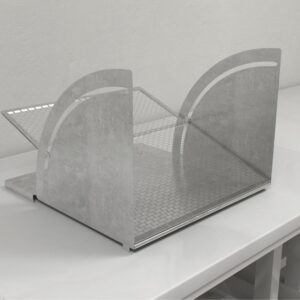$2,300.00 – $2,400.00Price range: $2,300.00 through $2,400.00
The fTIR Walkway, developed by Mendes and colleagues (Mendes et al., 2015), offers a method for assessing the kinematic features of motor systems in freely moving animals. This device utilizes a cost-effective and straightforward frustrated total internal reflection (fTIR) setup.
Various assays are available to examine different aspects of motor systems. For example, the Open-Field test is widely used to assess ambulatory and exploratory behaviors in animals. Conversely, the Rotarod test evaluates a subject’s ability to maintain balance on a rotating rod, targeting a distinct facet of motor function. Additionally, the Gait Test analyzes gait by observing the animal’s footprints. While these tests (more motor tests can be found here and here) contribute valuable insights into motor function and the impact of treatments, they do not offer direct quantification of motor and locomotor parameters, nor do they always provide dynamic measurements of motor activity.
Included are 6 key components:

MazeEngineers empowers preclinical neuroscience research with meticulously designed, customizable behavioral apparatuses. From manual classic mazes to fully automated smart systems, we provide the tools scientists need to capture high-quality, reproducible data for studies on learning, memory, anxiety, and depression.



Mouse Walkway: |
Length: 80cm |
Wall height: 15cm |
Base 5cm |
Mirror base length: 78cm |
Rat Walkway: |
Length: 104cm |
Wall height: 19cm |
Base 6.5cm |
Mirror base length: 100cm |

To ensure accurate results and high-quality video recordings, it’s important to clean the apparatus before and after each use to eliminate any residual stimuli that could impact the subject’s performance. The device is user-friendly and does not require any pretraining. Simply place the subject on the walkway to start the test and begin recording their performance.
Gait Analysis of Freely Moving Mice
Motor functions of wild-type C57BL/6J mice were assessed using the fTIR Walkway. Observations revealed that during initial contact, the entire paw touched the surface almost simultaneously, with significant pressure applied by the metatarsal and metacarpal pads of the hind and forelegs, respectively. This pressure gradually shifted toward the toes before lift-off during the stance phase. Notably, up to one-third of the stance phase was spent supporting weight with the toes, a finding consistent regardless of walking speed. Additionally, toe spreading was observed 20 to 30 milliseconds before ground contact at the end of the swing phase, suggesting active neuronal control. Faster mice exhibited step strides that were approximately 20% longer and had a shorter stance phase by about 50 milliseconds compared to their slower counterparts (Mendes et al., 2015).
The fTIR Walkway allows automated recording of motor and locomotion parameter including step patterns, footprint positioning, inter-leg coordination, and footprint contact parameters. The following set of kinematic parameters can be recorded in the fTIR Walkway device:
The fTIR Walkway is an automated system that minimizes human error during testing. It is more affordable than many other automated devices and offers the advantage of observing a broader range of locomotion and motor parameters. The system is user-friendly, requiring no pretraining, and the testing process is straightforward and efficient, making it quicker than other methods. Unlike tests such as the Gait Test, the fTIR Walkway does not need additional materials like ink or involve aversive stimuli like fear of falling, thus reducing stress and anxiety in the subjects. Additionally, the use of acrylic glass enhances the fTIR signal-to-noise ratio compared to traditional glass, ensuring better contact between the subject’s paws and the walking surface.
Acrylic glass is more prone to scratching compared to traditional glass, which can interfere with the fTIR signal and tracking accuracy. To address this issue, it is advisable to replace the scratched acrylic glass as needed. Additionally, conducting multiple trials on the fTIR Walkway might lead to muscle fatigue in the subjects, so incorporating rest periods between trials is crucial. Performance can also be influenced by factors such as the subject’s strain, species, age, and sex, as well as their emotional and mental state.
Hamers, F.P., Lankhorst, A.J., van Laar, T.J., Veldhuis, W.B., & Gispen, W.H. (2001). Automated quantitative gait analysis during overground locomotion in the rat: its application to spinal cord contusion and transection injuries. Journal of Neurotrauma, 18(2):187-201.
Mendes, C. S., Bartos, I., Márka, Z., Akay, T., Márka, S., & Mann, R. S. (2015). Quantification of gait parameters in freely walking rodents. BMC Biology, 13(1). doi:10.1186/s12915-015-0154-0
| Species | Mouse, Rat |
|---|
There are no questions yet. Be the first to ask a question about this product.